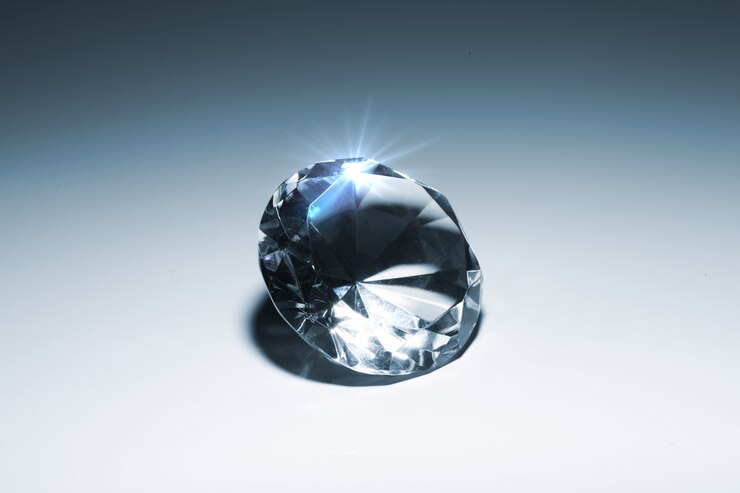Is a Lab Grown Diamond a Cubic Zirconia? Understanding the Key Differences

In the world of fine jewelry, confusion often arises between lab-grown diamonds and cubic zirconia. While both offer sparkle at a more accessible price point than natural diamonds, they are fundamentally different materials with distinct properties, values, and manufacturing processes. This comprehensive guide will help you understand why lab-grown diamonds stand apart from cubic zirconia and why the distinction matters for your jewelry choices.
The Fundamental Difference: Chemical Composition
Lab-grown diamonds are exactly what their name suggests - real diamonds created in controlled laboratory conditions. They share the identical chemical composition (pure carbon crystallized in a cubic structure) and physical properties as natural diamonds. These gems are grown using advanced technological processes that replicate the natural conditions under which diamonds form deep within the Earth.
In contrast, cubic zirconia (CZ) is a synthetic material made from zirconium dioxide. It bears no chemical relationship to diamond and is simply designed to mimic a diamond's appearance at a surface level. This fundamental difference in composition leads to notable variations in durability, brilliance, and long-term value.
Durability and Hardness: A Clear Distinction
One of the most significant differences between lab-grown diamonds and cubic zirconia lies in their hardness and durability:
Lab-grown diamonds rank 10 on the Mohs scale of hardness - identical to natural diamonds and making them the hardest known material on Earth. This exceptional hardness means they resist scratching and maintain their polish over generations of wear.
Cubic zirconia ranks only 8-8.5 on the Mohs scale. While this makes it harder than many gemstones, it's significantly softer than diamond. CZ will show wear over time, developing scratches and losing its polish with regular use.
Optical Properties: The Science of Sparkle
The way these materials interact with light reveals another crucial difference:
Lab-grown diamonds possess the same optical properties as natural diamonds, including:
- A refractive index of 2.42
- A dispersion rate of 0.044
- Unique patterns of light reflection and refraction
Cubic zirconia has notably different optical characteristics:
- A higher refractive index of 2.15-2.18
- A dispersion rate of 0.058-0.066
- More pronounced "rainbow" effects due to higher dispersion
These differences mean that while cubic zirconia may appear flashier at first glance, trained eyes can easily distinguish it from the more subtle and sophisticated sparkle of a real diamond, whether natural or lab-grown.
Manufacturing Process: Precision vs. Mass Production
The creation of lab-grown diamonds involves sophisticated technology and precise conditions:
- High-Pressure High-Temperature (HPHT) or Chemical Vapor Deposition (CVD) methods
- Growth periods of several weeks to months
- Careful monitoring and control of growing conditions
- Individual attention to each stone
Cubic zirconia production is a simpler, more industrialized process:
- Skull melting technique using zirconium oxide powder
- Production time of hours rather than weeks
- Mass production capabilities
- Lower production costs
Value and Investment Potential
While both options are more affordable than natural diamonds, lab-grown diamonds maintain significantly higher value than cubic zirconia:
- Lab diamonds typically retain value as a fine jewelry item
- Their durability ensures long-term wearability
- They can be insured as valuable jewelry pieces
- Each stone is unique and traceable
Cubic zirconia, while budget-friendly, is considered a temporary jewelry solution:
- Minimal resale value
- Limited longevity due to wear
- Mass-produced with no unique characteristics
- Not typically insured or certified
Environmental and Ethical Considerations
Lab-grown diamonds offer several advantages in terms of sustainability and ethics:
- Reduced environmental impact compared to mining
- No concerns about conflict sourcing
- Transparent supply chain
- Lower carbon footprint
While cubic zirconia also avoids mining impacts, its shorter lifespan and need for frequent replacement can contribute to increased waste over time.
Making Your Choice
When deciding between a lab-grown diamond and cubic zirconia, consider your priorities:
- If you want a real diamond with lasting value and durability, choose lab-grown
- If you need a temporary solution or costume jewelry, cubic zirconia might suffice
Lab-grown diamonds represent a technological breakthrough in fine jewelry, offering the same beauty and durability as natural diamonds with added benefits of sustainability and affordability. While cubic zirconia serves its purpose as a diamond simulant, it cannot match the fundamental qualities that make both natural and lab-grown diamonds exceptional.
For those seeking the enduring beauty and value of a real diamond while making a conscious choice about sustainability and ethics, lab-grown diamonds provide an authentic alternative that stands far apart from simple simulants like cubic zirconia.





